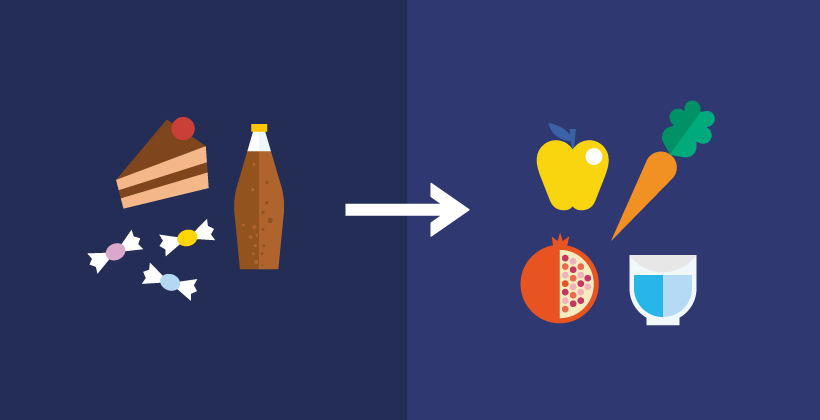Special nutritional requirements of the child athlete
Last Updated : 10 March 2011There are many health benefits to children from being highly active. However, the rapid period of growth during childhood and adolescence means that their nutritional requirements may differ from those of adults.
Physical activity: recommendations and benefits
The World Health Organization recommends that children and adolescents aged 5-17 years should take part in at least 60 minutes of moderate to vigorous, mainly aerobic activity a day.1 Physical activity assists in the development of motor skills and coordination, strengthens muscle and bone and may have a positive effect on blood pressure.1,2 Being physically active can also help you feel better.3,4
Active children have specific requirements
Nutrition plays a major role in both optimal growth and development, as well as in preventing injuries, and in overall performance.5 Children and adolescents are moving through a period of rapid growth and maturation and this has nutritional implications. The more physical activity that a child or adolescent takes part in, the more their nutritional requirements increase.
Total energy intake
Children and adolescents need a total energy intake high enough to meet daily requirements for growth, maturation and physical activity.5 Without an adequate energy intake the child may be left feeling fatigued, lose weight and fail to perform well both mentally and physically.5 In cases where energy intake is too low, the body uses protein from lean muscle mass as a source of energy.5 Problems with linear growth and bone health can be associated with long term inadequate intake of energy and nutrients.
Carbohydrates, fats and protein
Carbohydrates are well known as the body’s preferred source of energy while exercising, although this may not be directly applicable to children.2,6 It is thought that children may use fat as an energy source more during physical activity compared to adults. Carbohydrates however should not be removed from the child’s diets as especially wholemeal carbohydrate foods can be a very good source of fibre and other nutrients.5 Children and adolescents as well as adults benefit from carbohydrate intake during prolonged exercise.6
Fat intake is important for the physically active child. Fat can be used as an energy source and essential fatty acids need to be consumed in the diet. Many foods which can typically be high in fat, such as oily fish, meat and dairy products contain a number of essential vitamins and minerals for growth and development. These include; vitamin B12, fat soluble vitamins such as vitamins A and D, and minerals iron, zinc, chromium, magnesium and calcium.5
Protein is important as it provides the essential amino acids that play a vital role in the growth of tissues, including muscle. Generally, active individuals naturally increase their protein intake when they increase their energy intake.5 However physically active children who are vegetarian or vegan may need extra assistance to meet their requirements for protein.
Liquid intake
Children and adolescents do not have the same capability that adults have to regulate their body temperature. Children tend to accumulate more heat from the environment as they have a greater ratio of surface area to body mass.5 This can be especially problematic in hot environments. Sweat rates may also be lower in children, although as they mature this seems to increase.5 For these reasons children must be careful to consume enough fluid during the day, and while taking part in physical activity to prevent dehydration and heat stress.
The downside of being active
Overweight and obesity may be more prevalent in inactive children because the child does not expend enough energy to balance any excess intake, and that energy surplus is stored as body fat.7 Currently a large number of children do not take part in regular physical activity. Recent research from the European HELENA project has found that only 57% of teenage boys, and 28% of girls achieve at least 60 minutes of moderate to vigorous physical activity a day.8 Another study involving 34 countries from around the globe found that 76% of 13-15 year old boys, and 85% of 13-15 year old girls failed to meet recommended activity levels.9
In conclusion
There are many benefits to a child being physically active. As they are moving through a stage of rapid growth and development it is important that children consume enough total energy and nutrients. Carbohydrate requirements during physical activity in children seem to differ compared to adults, and fat may be more useful during children’s exercise. Physically active children should also consume adequate amounts of liquids as they have a higher risk of dehydration and heat stress compared to adults.
References
- WHO (2011). Global Recommendations on Physical Activity for Health - 5-17 years old.
- Mcmurray RG et al. (2002). A school-based intervention can reduce body fat and blood pressure in young adolescents. J Adolesc Health 31(2):125-132.
- Donaldson SJ, Ronan KR. (2006). The effects of sports participation on young adolescents' emotional well-being. Adolescence 41(162):369-389.
- Steptoe A, Butler N. (1996). Sports participation and emotional wellbeing in adolescents. Lancet 347(9018):1789-1792.
- Petrie HJ et al. (2004). Nutritional concerns for the child and adolescent competitor. Nutrition 20:620-631.
- Montfort-Steiger V, Williams CA. (2007). Carbohydrate intake considerations for young athletes. J Sports Sci Med 6:343-352
- EUFIC Basics (2006). Child and adolescent nutrition.
- Ruiz JR et al. (2011). Objectively measured physical activity and sedentary time in European adolescents: The HELENA study. Am J Epidemiol, doi:10.1093/aje/kwr068
- Guthold R et al. (2010). Physical activity and sedentary behaviour among schoolchildren: A 34-country comparison. J Pediatr 157(1):43-49.e1.



